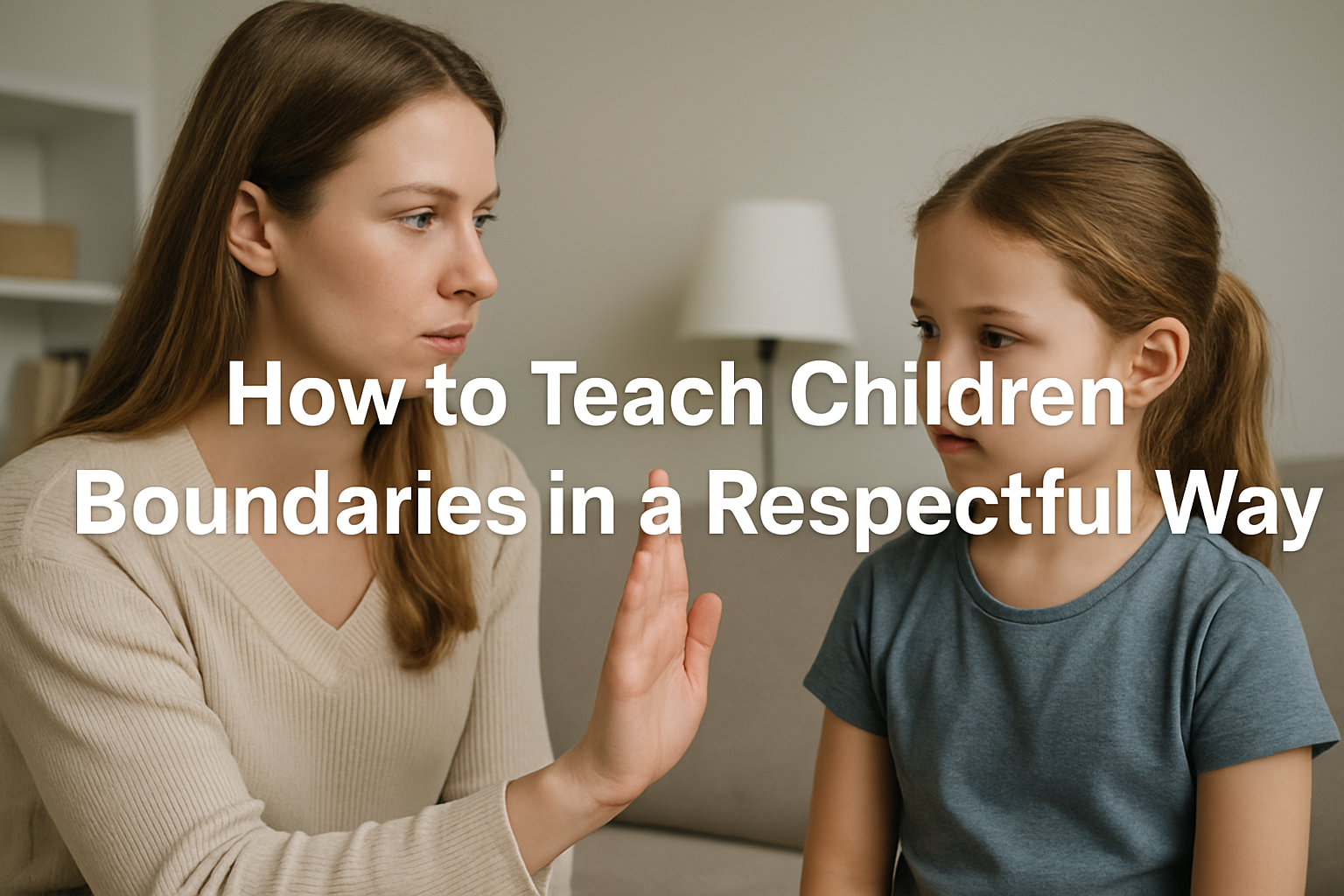One of the most valuable life skills you can teach your child is how to understand, respect, and set boundaries. Boundaries are essential for emotional health, safety, and relationships—not only during childhood, but throughout life.
The good news? You don’t have to be harsh or controlling to raise a respectful child. With patience, empathy, and consistency, you can teach boundaries in a loving, effective way.
What Are Boundaries—and Why Do Kids Need Them?
Boundaries are clear expectations or limits we set to protect our physical, emotional, and mental well-being. For children, boundaries provide:
- A sense of safety and structure
- Emotional security
- Respect for others and themselves
- Healthy social and emotional development
Without clear limits, children may feel overwhelmed, confused, or entitled. Boundaries create calm, confidence, and trust.
Start with Connection, Not Control
The foundation of teaching boundaries isn’t punishment—it’s connection.
When your child feels:
- Loved
- Heard
- Seen
…they are much more likely to listen and cooperate. Make sure your approach is grounded in warmth and respect.
Examples:
- Get down to eye level when talking
- Use a gentle voice
- Show empathy before correction: “I know it’s hard to stop playing…”
Children respond best when they feel understood.
Be Clear and Consistent
Children don’t naturally understand limits—we must teach them clearly and repeatedly.
Use Simple Language:
- “It’s not okay to hit.”
- “We use gentle hands.”
- “Toys stay in the playroom.”
Then follow through with consistency. Mixed signals lead to testing and confusion.
Consistency means:
- Reinforcing the same boundary every time
- Both parents or caregivers being on the same page
- Applying the same expectations across situations
The clearer the rule, the more secure the child feels.
Set Age-Appropriate Boundaries
Your child’s age and development level matter when teaching limits.
Toddlers (1–3):
- Need physical boundaries (gates, supervision)
- Benefit from short, clear rules: “No biting.”
- Respond well to redirection instead of long explanations
Preschoolers (3–5):
- Can begin to understand reasons behind rules
- Learn from cause and effect: “If you throw the toy, it goes away.”
- Benefit from visual aids (like routine charts)
School-age (6+):
- Can discuss rules and consequences
- Benefit from choices and natural consequences
- Learn to set their own emotional and social boundaries
Use Natural and Logical Consequences
Instead of punishment, use consequences that make sense to the situation.
Natural Consequence:
If a child refuses to wear a coat, they’ll feel cold outside (safely).
Logical Consequence:
If they throw food, the meal ends early.
Make sure consequences are:
- Immediate
- Related to the behavior
- Respectful (not shame-based)
- Explained calmly
This teaches accountability, not fear.
Empower Your Child to Set Their Own Boundaries
Children also need to learn how to say “no” and express discomfort. This builds confidence and safety—especially in social or peer situations.
How to Support This:
- Respect their “no” during play: “You don’t want a hug right now? That’s okay.”
- Teach body safety: “No one can touch your body without permission.”
- Encourage speaking up: “If something feels wrong, you can tell me anytime.”
- Role-play real-life situations: refusing a pushy friend, saying “stop,” or asking for space
When children learn to assert themselves, they’re better prepared to navigate the world.
Model Boundaries Yourself
Children learn more from what you do than what you say. If you set healthy boundaries in your own life, your child will follow your example.
Practice:
- Saying “no” without guilt
- Taking breaks when overwhelmed
- Using respectful communication in conflict
- Asking for personal space
Let your child see that boundaries are normal and necessary.
Avoid Harsh Discipline
Harsh punishments, yelling, or shaming may get quick compliance—but they damage trust and self-esteem in the long run.
Instead, aim to:
- Stay calm when enforcing limits
- Offer do-overs: “Let’s try that again with kind words.”
- Focus on teaching, not controlling
- Offer choices whenever possible: “You can brush your teeth now or in five minutes—your choice.”
Firmness and kindness can go hand in hand.
Reinforce Positive Behavior
When your child respects a boundary, notice it! Positive reinforcement is more effective than constant correction.
Try:
- “I saw you stopped when I asked—thank you!”
- “You used kind words when your sister upset you. That was respectful.”
- “You listened the first time. Great job taking responsibility.”
Praise helps children feel proud of their behavior and encourages more of it.
Boundaries Teach Respect, Safety, and Confidence
Teaching boundaries doesn’t mean being strict or harsh. It means showing your child how to live with self-awareness, self-respect, and empathy for others.
It’s not always easy. You’ll repeat yourself, face resistance, and have tough days. But over time, your consistency will build security and trust.
You’re not just teaching rules—you’re raising a child who knows their worth and how to navigate the world with kindness and confidence.
And that’s powerful.
